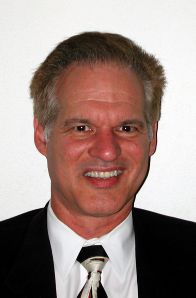|
|
|
Friday, April 24th, 2009
Although there’s often a substantial lag between hiring and productivity there’s a lot you can do to reduce it.
Yesterday we discussed what to do between acceptance and start to solidify your hires, integrate them into the team and familiarize them with the company’s market and products.
 That effort doesn’t end the day they report to work. That effort doesn’t end the day they report to work.
During the first couple of days take time to go over the information you’ve already shared (see previous post) and get some feel of where the knowledge gaps that will slow productivity. Be sure to make this a positive experience—it shouldn’t feel like finals week.
To have the most productive employees, you must build a partnership. Your people must believe that you’ll treat them fairly and help them to grow to reach their true potential—and you must do exactly that.
People respond to this treatment by going the extra yard, working the extra hours, becoming, if they aren’t already, and real 10 percenters.
Offer plenty of feedback, waiting for the annual review is grossly unfair, as is giving feedback only when something is wrong. Honest and authentic feedback don’t mean abusive or destructive. Offering recognition of what the person does well and being candid about areas that need improvement are two hallmarks of a good review.
This holds true for all your people, candid feedback throughout the year means no surprises during the annual review.
Stay with the buddy system you established at acceptance, having access to someone who knows the ropes and culture is invaluable to those new to the company and the team.
Be sensitive to any actions or behaviors that are causing a problem, or have that potential and address them immediately. It’s far easier to “nip it in the bud” on a friendly, informal basis than to let it escalate into a major situation.
You’ve invested a lot of time and money in acquiring every one of your employees and building a world-class team, group, department, or company. It’s just plain stupid to ignore, even for one day, anything that will damage those efforts. Early intervention is key to avoiding human-based problems and that’s your real job as a manager.
Always remember that when it comes time for your own review you are who you hire and nothing you do as an individual will offset a low-productivity team or high turnover.
Image credit: djayo on sxc.hu
Posted in Business info, Communication, Culture, Hiring, Motivation, Retention | No Comments »
Thursday, April 23rd, 2009
Guy Kawasaki said, “Don’t assume you’re done [after you’ve hired someone].”
No kidding. After 30 years it still never ceases to amaze me that managers bust their butts spending time and money finding the right person, craft the offer, close the candidate and then go merrily on their way assuming that the person will show up at the appointed time—even if that time is two or more weeks in the future.
A lot can happen in two weeks.
When they do show up these managers do little-to-nothing to integrate them into the team, culture or work—other than to assign projects with a sink-or-swim attitude.
These managers complain when new hires don’t ‘hit the ground running fast enough’ and are totally perplexed when they either burn up or burn out and leave.
What motivates mangers to act like this? Sometimes ignorance, but mostly just not thinking.
Remember that
- People aren’t water faucets. They don’t turn off emotions and feelings in the morning when they leave for work. They’re present in all their chaotic, sloppy splendor—but rarely admitted or discussed. Many of these emotions and insecurities will surface during traumatic times. According to the shrinks, changing jobs, even voluntarily getting out of a terrible situation, is one of the three greatest traumas that people face. (The other two are relocation and divorce, because unlike death people can play the ‘what if’ game forever.)
- Resigning isn’t easy; it’s not comfortable and people don’t like doing it. And the longer they’ve worked for the manager/company the harder it is, especially when nothing is really wrong.
- Even in this economy, counteroffers still happen although they’re counterproductive. They hurt the company, the group and the individual. The ones that work are the exception to the rule—probably less than 5%. As far back as 1983, the WSJ National Employment Weekly was printing articles warning about the dangers of accepting counteroffers; nothing’s changed; if anything it’s gotten more so.
 Once your candidate has accepted, take an assumptive approach when talking about anything in the future. Use phrases such as: When you’re here, After you start, etc. Once your candidate has accepted, take an assumptive approach when talking about anything in the future. Use phrases such as: When you’re here, After you start, etc.
Then lock in your hire with these seven simple acts (simple once you think of them).
- Call her after her resignation to make sure things went smoothly.
- Assign a buddy from the team who can supply help and information on a proactive basis.
- Give her information to read to familiarize herself with your market, company and its products.
- Discuss the first project and give her information to take home.
- Besides you and her buddy, have various members of the interviewing team call her occasionally to tell her how much they’re looking forward to working with her.
- Solicit her opinion; ask for her suggestions.
- Don’t overwhelm her, but make her feel that she’s already a valued member of the team.
Be sure to come back tomorrow and learn what to do after they start work.
Image credit: acerin on sxc.hu
Posted in Business info, Communication, Culture, Hiring, Motivation, Retention | 2 Comments »
Tuesday, April 21st, 2009
Many economic pundits are predicting the end of this economic meltdown (see previous post). Chalk those predictions up to the optimism of springtime and the need to fill a news cycle.
 While rates of decline for various economic indicators may be decreasing, the excesses that created this meltdown will take years to work through. The ham-handed responses by government and many businesses will only delay the eventual recovery. This is only a break in the winter weather. While rates of decline for various economic indicators may be decreasing, the excesses that created this meltdown will take years to work through. The ham-handed responses by government and many businesses will only delay the eventual recovery. This is only a break in the winter weather.
But even as the economic meltdown is only now approaching its nadir, a few new businesses may find this to be a fertile time to set up shop.
Consider the single greatest expense and challenge of most new businesses – finding and attracting talented workers, trained and immediately available for interesting work.
Currently the US economy provides 155 million jobs. This meltdown has reduced employment through five distinct mechanisms shown in the table below:
|
Type of Employment Reduction
|
Description
|
Number of Workers (millions)
|
Percent of the Workforce
|
|
Unemployed
|
Recent filers for unemployment
|
13.2
|
8.5%
|
|
Underemployed
|
Working part-time while seeking full-time employment
|
9
|
5.8%
|
|
Reduced Hours
(Furlough)
|
Full-time workers working less than full-time
|
2.7
|
1.7%
|
|
Discouraged Workers
(Marginally Attached)
|
Unemployed for over one year.
|
2.1
|
1.0%
|
|
Non-starters
|
Recent college graduates who have not found permanent employment
|
0.18
|
0.1%
|
|
Totals
|
|
27.18
|
17.1%
|
Given that the measured statistics are usually undercounts and that these unemployment/underemployment numbers will grow in the next 12 months, likely over 32 million workers (over 20%) in the US will have talents and time available to participate in another business.
For many companies, payroll costs represent over 65% of total expenses. For new ventures, personnel costs can be much larger, up to 90% of expenses. In this environment, many workers are searching for work.
New ventures traditionally offer below-market compensation for their workers. However, they offer other significant benefits.
Typically, new ventures offer broader scope in each job, better growth opportunities, ability to make large, direct, measurable contributions to the organization, and the enthusiasm of working in a small, close-knit team. Some new ventures offer profit participation or stock options. For unemployed or underemployed workers, these benefits can be significant, even when the cash compensation is low.
Technology and the recession have dramatically reduced other business operating costs. The cost of computers, phone systems, and tele-conferencing have dropped. Office space is cheaper, and home-based employees can cut that cost even further. Travel, where necessary, is cheaper than any time in the past ten years.
Even without easy availability of capital for start-ups, this recession may offer fertile ground for new ventures and with the added benefit of retaining far more of the equity.

Posted in Business info, Compensation, Hiring, Innovation, Motivation, Retention, Strategy | No Comments »
Tuesday, April 21st, 2009
Few companies would consider doing a major project using individual contributors instead of teams.
Hiring is a major project, one that has substantial long-term impact on the group, department, and company.
 So, why are teams used in every part of business today—except staffing? Why is it assumed that the various parts of staffing are a function only of managers and HR? So, why are teams used in every part of business today—except staffing? Why is it assumed that the various parts of staffing are a function only of managers and HR?
Sadly, some managers are not comfortable involving their people. The reasons range from control issues (involvement in staffing is very empowering) to fear (the manager feels insecure) to disinterest (staffing has a low priority).
But in today’s fast-paced work environment, it’s hard for managers to block out several consecutive minutes, let alone the hours, needed to read resumes, let alone source any candidates, screen, etc.
Speaking as an ex-headhunter, I’m here to say that the mechanics of recruiting aren’t rocket science; they may not be intuitive, but anybody can learn them, especially in these days of LinkedIn, Facebook and Twitter.
More importantly, when it comes to recruiting, there is no manager, no HR person, certainly no headhunter who is as impressive to an outsider as employees excited about their company.
Candidates really respond positively to being recruited by a peer! A peer who likes her company so much she is willing to put time into the staffing process? A manager to whom hiring is not about control but rather about empowerment? Who sees hiring as a chance to shine, not a necessary evil? Who not only understands the desire to make a difference but actually gives people extra opportunities to do so?
Wow! That’s the kind of manager most good candidates want to work for! Nobody can sell the company or the group or the project or the manager with the same intensity and passion as the company’s own people!
More bodies ease the work load, as well as supplying creative ideas and fresh energy to the staffing effort. Further, teams
- empower and give people a feeling of ownership;
- engage people in the present and future of their group and the company;
- teach critical managerial skills;
- spreads the workload; and
- helps minimize new employee friction.
With the exception of technical interviewing anybody in your company can be on the team, whether they are from that department or not. Sure, it takes a well written job req, but almost everybody in your company knows as much technically as most headhunters—and they certainly know more about the company. Best of all, they really care!
None of what I’ve written hinges on the economy; the time to teach people new skills is not, not when you have multiple openings and are under pressure to fill them.
Think of it as an investment—one with an amazing ROI.
Your comments—priceless
Don’t miss a post, subscribe via RSS or EMAIL
Image credit: ZedBee|Zoë Power on flickr
Posted in About Leadership, Communication, Culture, Ducks In A Row, Leadership Resources, Leadership Skills, management, Personal Development | 1 Comment »
Sunday, March 29th, 2009
See all mY generation posts here.

Posted in Culture, Hiring, mY generation | No Comments »
Friday, March 20th, 2009
 I’m no happier about the AIG and other bonuses paid to screwed up Wall Street banks, but I’m not sure why any of us are surprised. I’m no happier about the AIG and other bonuses paid to screwed up Wall Street banks, but I’m not sure why any of us are surprised.
“In the largest 25 corporate bankruptcies between 1999 and 2002, while hundreds of billions of dollars of investor wealth and over 100,000 jobs disappeared, the Financial Times found the “barons of bankruptcy” made off with $3.3 billion.”
Giant compensation packages, guaranteed bonuses and platinum parachutes are excused by Boards and executives as necessary to attract the “best and brightest,” but here’s what’s really going on.
The ‘names’ demands outsize compensation/stock options/guaranteed bonus/etc. in order to validate their ‘brand’.
Those responsible for hiring not only meet the demands, but even exceed them in an effort to attain or sustain the company’s reputation as a better home for ‘stars’—the more stars you have the greater the bragging rights— mine’s bigger than yours in high school locker room talk.
Now let’s consider the folly of this attitude.
Those hiring often seek a name brand in the mistaken belief that the brand comes with a warranty that guarantees good results.
But no matter who you hire you’re actually paying for their past performance, which is always influenced by
- circumstances—boss and company positioning in its market and industry
- environment—culture and colleagues;
and let us not forget that minor factor
The hiring mindset is that everything the brand accomplished was done in a total vacuum and dependant only on the brand’s own actions, therefore changing every single surrounding factor will have no impact on performance.
Put like that it sounds pretty stupid, doesn’t it.
This is one of the prime reasons that so many CEOs bring their ‘own team’ over when they move, as do managers all the way down the food chain—they know they didn’t do it alone.
CEOs aren’t like movie and rock stars whose very names draw consumers into spending money—nobody ever bought a product from GE because Jack Welch was CEO, nor do they carry Jobs iPods—so why pay them that way?
Moreover, assuming that performance occurring during an expansion is a valid yardstick for performance in general, let alone a downturn, is sheer idiocy.
You have only to remember the difficulties faced by people whose management skills were honed between 1991 and 2000, the longest expansion in our history. When the recession hit in March of 2001 they had no experience whatsoever of how to drive revenue or manage in a down economy.
That recession and the previous one in 1990 lasted only 8 months each. The longest recession we’ve had was 2 years, January-July 1980 and July 1981-November 1982, and that one had a 12 month break in it. This means there are a very small number of managers with any actual experience managing in anything even close to what’s happening now.
The current recession officially started in December 2007, so it’s already 15 months old and the end isn’t in sight.
What experience makes these folks the ‘best and brightest’ for today’s world?
Just what the hell are companies still guaranteeing oversized compensation and exorbitant exit packages when now is definitely the time to pay for future performance—no guarantees.
Image credit: flickr
Posted in Business info, Compensation, Culture, Hiring, Motivation, Retention, Stock Options | 1 Comment »
Friday, March 13th, 2009
 A few days ago an executive I’ll call Dan called me to bemoan the lack of creativity in his organization and I told him to stop hiring dogs. He informed me that he had great people and when I agreed he demanded to know why I called them dogs. A few days ago an executive I’ll call Dan called me to bemoan the lack of creativity in his organization and I told him to stop hiring dogs. He informed me that he had great people and when I agreed he demanded to know why I called them dogs.
The problem is that Dan hires people he likes who fall inside his comfort zone, so his organization gets along well. And while it’s well diversified from an HR point of view it has little mental diversity.
It’s a happy place, kind of like a dog park with a large variety of breeds and mutts all well socialized to play together and those that don’t play nice are asked to leave.
That kind of peace may be good for a dog park, but it can mean death for a company’s innovation efforts.
Unfortunately, people have been moving away from thought diversity for quite awhile now. The attitude has a name, homophily, it’s been around forever and it’s an attitude I run into frequently when it comes to hiring, although it’s rarely intentional. It’s a word you should learn just so you can avoid it.
It’s what makes it difficult for Dan’s people to be creative; when something is suggested it’s often accepted with little discussion and even when a counter idea is presented it has similar DNA.
It’s not that Dan needs to toss a bunch of cats in the middle, but he does need to start hiring people that come from a variety of companies and industries, with different experiences and with whom he may not be as comfortable as he is now.
It also means that Dan will have to work harder.
Not because his people won’t get along, but because diversity of thought does foster exactly what Dan wants—higher creativity.
Creativity means multiple ideas with no common DNA leading to passionate champions, intense discussions and heated meetings. Dan will have to actively manage the various elements if he wants to harness that energy for the benefit of the organization.
Whether you consider yourself a manager, a leader or a combination thereof, the more mentally diverse your organization the more difficult to manage, but the rewards are high for doing it well.
Your comments—priceless
Don’t miss a post, subscribe via RSS or EMAIL
Image credit: sxc.hu
Posted in About Leadership, Culture, Entrepreneurship, Innovation, Leadership Skills, management, Personal Development | 2 Comments »
Monday, March 9th, 2009
 Why Can’t We Figure Out How to Select Leaders? was the question asked by Harvard’s Jim Heskett at the beginning of February. Why Can’t We Figure Out How to Select Leaders? was the question asked by Harvard’s Jim Heskett at the beginning of February.
It’s a pertinent question right now, since for more than a decade many of the people held up as examples of great leadership have fallen on their faces and even ended up in jail. Worse still, the companies they ran were destroyed or badly damaged—short term Wall Street numbers were met at the cost of long-term innovation and sustainability.
The Forum drew 88 comments that Heskett says fall in three categories,
- enumerating the qualities that we should look for in a leader without suggesting how we identify and select for them;
- the body of knowledge based on research and practice that can guide and improve the selection process and its outcomes; and
- why theory has had less impact on results than we might expect, essentially identifying reasons for a gap between theory and results achieved in practice.
Two quotes I found very pertinent from the original article,
“At most companies, people spend 2 percent of their time recruiting and 75 percent managing their recruiting mistakes.” — Richard Fairbank, CEO, Capital One
This is so true it’s depressing. I started my company to teach better hiring skills; it was funded by a retired CEO who believed that hiring was a manager’s most crucial task and that few managers were very good at it—boom or bust there was little interest. (Going forward, the information was folded into our overall coaching program.)
“There are certain jobs where almost nothing you can learn about candidates before they start predicts how they’ll do once they’re hired.” –Malcolm Gladwell (author of The Tipping Point, Blink, and Outliers)
Also true. It’s the difference of asking customers what they want and conceiving a product that no one mentioned because it didn’t exist—think iPod. There are no questions to tell you if a candidate can see around corners.
Even hiring a person who has done it before doesn’t mean they can do it again; there are just too many variables in any given situation.
How could you have hired someone to deal with the current crisis when it was unimaginable just a few short months ago.
Perhaps it’s time for companies to stop looking for guarantees, perfection or a savior—no candidate walks on water.
I believe what is needed is to spread leadership throughout the company and avoid hiring imperial egos. What do you think?
I hope you’ll take the time to read both Heskett’s article (short) and comments (interesting and valuable) and then leave your thoughts here.
Your comments—priceless
Don’t miss a post, subscribe via RSS or EMAIL
Image credit: flickr
Posted in About Leadership, Communication, Leadership Skills, management, What Leaders DO | 1 Comment »
Friday, March 6th, 2009
 The winners of the future will be the companies that can fill their needs from the available labor pool, whatever the size, and the managers whose hiring skills allow them to confidently recognize talent, no matter the source. The winners of the future will be the companies that can fill their needs from the available labor pool, whatever the size, and the managers whose hiring skills allow them to confidently recognize talent, no matter the source.
It is neither the surplus of talent in a down market, nor the dearth of it in a tight market, that creates a staffing problem. Rather it is the attitude of many managers that if the person is not already working there must be something wrong.
In the Eighties the thought was “There must be something wrong; companies only lay off their deadwood.” In the late Nineties, it was, “There must be something wrong or this candidate would already have a job.”
Frequently the source of such attitudes is managers’ lack of confidence in the ability to make good hiring decisions.
By hiring currently employed people, managers unconsciously can validate a positive hiring decision (must be good or she wouldn’t be there) or excuse a hiring mistake (assumed he was good because he was at XYZ).
Why the prevalence of this rarely-discussed-almost-never-admitted lack of hiring confidence? Why is staffing, with all its associated pieces, one of the most disliked of all management tasks?
Simply stated, most people don’t like doing things when they don’t feel competent, and it is difficult to feel competent
- doing an intricate task,
- for which you’ve had little or no training,
- makes you uncomfortable, and
- do relatively infrequently.
Staffing involves many tasks
- developing detailed reqs,
- screening resumes,
- doing substantial, time-saving phone interviews,
- creating and mentoring an interviewing team,
- interviewing,
- crafting an offer,
- closing and landing the candidate,
- avoiding post-acceptance pitfalls, and
- a myriad of other details.
Above all is the need to hire correctly; in other words, to hire the right person at the right time and for the right reasons.
To do it well requires sophisticated, proactive, real-world based training geared specifically to line managers.
Instead, much of the available training is geared to having an HR department or using an outside recruiter; is too mechanical; or is comprised of general psychology information.
When there is an abundance of highly qualified candidates it’s a result of the economy, not of a surplus of people. Population demographics, baby bust to retiring Boomers, guarantee hard hiring times for a decade at least; the current situation hasn’t changed the basic global demographics.
To assure their ability to meet the staffing challenges of the twenty-first century companies and managers need to work together to
- create an efficient, proactive hiring process;
- build internal sourcing skills that work in any labor market;
- raise hiring skills to the level of core competency; and
- disseminate them throughout the organization.
Finally, never lose sight of the fact that the only managerial action that should have a higher priority than hiring is retaining a current employee.
Image credit: sxc.hu
Posted in Business info, Communication, Culture, Hiring, Motivation, Personal Growth, Retention | 3 Comments »
Thursday, March 5th, 2009
 I have a post today at Leadership Turn that focuses on college student’s grade expectations for “trying really hard.” It’s worth clicking over to read because these are the same people you will be hiring over the next few years. Scary thought. I have a post today at Leadership Turn that focuses on college student’s grade expectations for “trying really hard.” It’s worth clicking over to read because these are the same people you will be hiring over the next few years. Scary thought.
I said at the end that hiring managers might find it of more value to look at grades a bit differently.
Historically, managers and corporations have considered overall GPAs to be a significant factor when recruiting.
But based on current attitudes towards grade inflation, combined with federal, state and local governments’ focus on funding numbers as opposed to learning, perhaps there is a more useful use of grades.
Let me give you a real world example, I’ll call him Sam.
Sam has a 2.7 GPA, but if you look closer you see a different story.
Sam said that when he started college he not only didn’t bother studying he didn’t really know how. He said his grades in high school were mostly Bs and a few As, but that he never really put out much effort. His first semester was totally in the toilet and he almost flunked out when his GPA hit 1.8.
That was a wake-up call.
Sam buckled down. He started by learning how to study and how to learn and really applied himself.
Third semester his GPA was 2.5; junior year GPA was 3.1; senior year isn’t over. Additionally, the GPA for his major is a solid 3.5.
Sam isn’t getting a lot of interviews; he believes it’s because of that 2.7 GPA and he’s probably right.
But for a manager with an entry level position, Sam is solid gold.
Think about it,
- he knows that he doesn’t know it all;
- he enjoys learning and understands the value of hard work;
- he knows that showing up every day isn’t enough; and
- he realizes that he needs to perform at a high level to have value.
Sure sounds like a valuable employee to me—and one with a lot of potential loyalty to those who can see past the trappings to the real value.
Are you smart enough and confident enough of our interviewing skills to find the Sam hiding in that stack of resumes?
Image credit: flickr
Posted in Business info, Culture, Hiring, Motivation, Retention | 4 Comments »
|
 Subscribe to
Subscribe to
MAPping Company Success
About Miki 
Clarify your exec summary, website, etc.
Have a quick question or just want to chat? Feel free to write or call me at 360.335.8054
The 12 Ingredients of a Fillable Req
CheatSheet for InterviewERS
CheatSheet for InterviewEEs™
Give your mind a rest. Here are 4 quick ways to get rid of kinks, break a logjam or juice your creativity!
Creative mousing
Bubblewrap!
Animal innovation
Brain teaser
The latest disaster is here at home; donate to the East Coast recovery efforts now!
Text REDCROSS to 90999 to make a $10 donation or call 00.733.2767. $10 really really does make a difference and you'll never miss it.
And always donate what you can whenever you can
The following accept cash and in-kind donations: Doctors Without Borders, UNICEF, Red Cross, World Food Program, Save the Children
*/
?>About Miki
About KG
Clarify your exec summary, website, marketing collateral, etc.
Have a question or just want to chat @ no cost? Feel free to write
Download useful assistance now.
Entrepreneurs face difficulties that are hard for most people to imagine, let alone understand. You can find anonymous help and connections that do understand at 7 cups of tea.
Crises never end.
$10 really does make a difference and you’ll never miss it,
while $10 a month has exponential power.
Always donate what you can whenever you can.
The following accept cash and in-kind donations:
|
 That effort doesn’t end the day they report to work.
That effort doesn’t end the day they report to work.



 Once your candidate has accepted, take an assumptive approach when talking about anything in the future. Use phrases such as: When you’re here, After you start, etc.
Once your candidate has accepted, take an assumptive approach when talking about anything in the future. Use phrases such as: When you’re here, After you start, etc. While rates of decline for various economic indicators may be decreasing, the excesses that created this meltdown will take years to work through. The ham-handed responses by government and many businesses will only delay the eventual recovery. This is only a break in the winter weather.
While rates of decline for various economic indicators may be decreasing, the excesses that created this meltdown will take years to work through. The ham-handed responses by government and many businesses will only delay the eventual recovery. This is only a break in the winter weather.
 So, why are teams used in every part of business today—except staffing? Why is it assumed that the various parts of staffing are a function only of managers and HR?
So, why are teams used in every part of business today—except staffing? Why is it assumed that the various parts of staffing are a function only of managers and HR?

 A few days ago an executive I’ll call Dan called me to bemoan the lack of creativity in his organization and I told him to stop hiring dogs. He informed me that he had great people and when I agreed he demanded to know why I called them dogs.
A few days ago an executive I’ll call Dan called me to bemoan the lack of creativity in his organization and I told him to stop hiring dogs. He informed me that he had great people and when I agreed he demanded to know why I called them dogs.
 The winners of the future will be the companies that can fill their needs from the available labor pool, whatever the size, and the managers whose hiring skills allow them to confidently recognize talent, no matter the source.
The winners of the future will be the companies that can fill their needs from the available labor pool, whatever the size, and the managers whose hiring skills allow them to confidently recognize talent, no matter the source. I have a post today at Leadership Turn that focuses on college student’s
I have a post today at Leadership Turn that focuses on college student’s 
